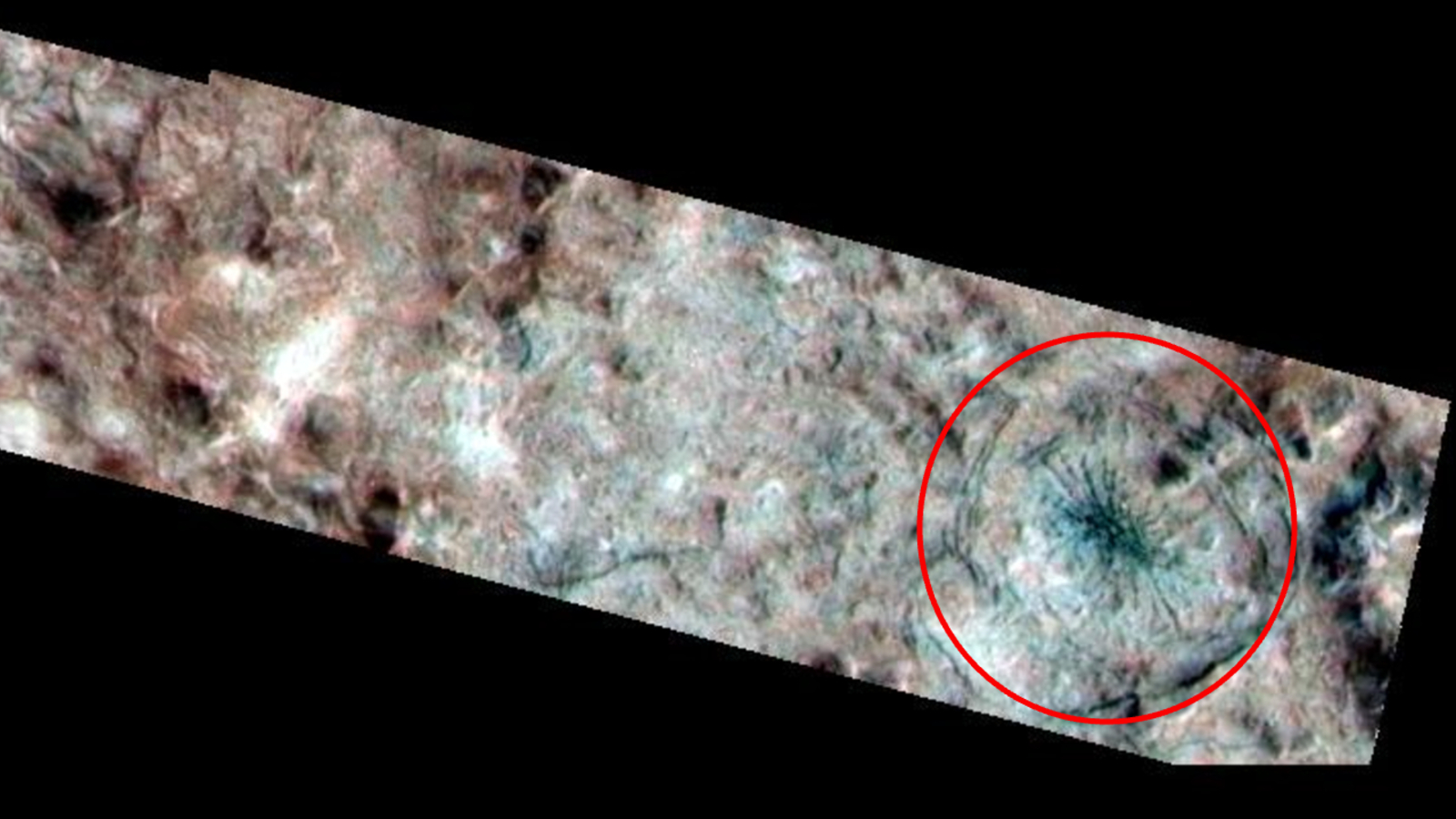Mummy Mask May Reveal Oldest Known Gospel
This story was updated at 9:54 a.m. ET on Feb. 9.
A text that may be the oldest copy of a gospel known to exist — a fragment of the Gospel of Mark that was written during the first century, before the year 90 — is set to be published.
At present, the oldest surviving copies of the gospel texts date to the second century (the years 101 to 200).
This first-century gospel fragment was written on a sheet of papyrus that was later reused to create a mask that was worn by a mummy. Although the mummies of Egyptian pharaohs wore masks made of gold, ordinary people had to settle for masks made out of papyrus (or linen), paint and glue. Given how expensive papyrus was, people often had to reuse sheets that already had writing on them.
In recent years scientists have developed a technique that allows the glue of mummy masks to be undone without harming the ink on the paper. The text on the sheets can then be read.
The first-century gospel is one of hundreds of new texts that a team of about three-dozen scientists and scholars is working to uncover, and analyze, by using this technique of ungluing the masks, said Craig Evans, a professor of New Testament studies at Acadia Divinity College in Wolfville, Nova Scotia.
"We're recovering ancient documents from the first, second and third centuries. Not just Christian documents, not just biblical documents, but classical Greek texts, business papers, various mundane papers, personal letters," Evans told Live Science. The documents include philosophical texts and copies of stories by the Greek poet Homer. [See Images of Early Christian Inscriptions and Artifacts]
Get the world’s most fascinating discoveries delivered straight to your inbox.
The business and personal letters sometimes have dates on them, he said. When the glue was dissolved, the researchers dated the first-century gospel in part by analyzing the other documents found in the same mask.
One drawback to the process is that the mummy mask is destroyed, and so scholars in the field are debating whether that particular method should be used to reveal the texts they contain.
But Evans emphasized that the masks that are being destroyed to reveal the new texts are not high quality ones that would be displayed in a museum. Some are not masks at all but are simply pieces of cartonnage.
Evans told Live Science, "We're not talking about the destruction of any museum-quality piece."
The technique is bringing many new texts to light, Evans noted. "From a single mask, it's not strange to recover a couple dozen or even more" new texts, he told Live Science. "We're going to end up with many hundreds of papyri when the work is done, if not thousands."
Debate
Scholars who work on the project have to sign a nondisclosure agreement that limits what they can say publicly. There are several reasons for this agreement. One is that some of the owners of these masks simply do not want to be made known, Evans said. "The scholars who are working on this project have to honor the request of the museums, universities, private owners, so forth."
The owners of the mummy masks retain ownership of the papyrus sheets after the glue on them is dissolved.
Evans said that the only reason he can talk about the first-century gospel before it is published is because a member of the team leaked some of the information in 2012. Evans was careful to say that he is not telling Live Science anything about the first-century gospel that hasn't already been leaked online.
Soon after the 2012 leak, speculation surrounded the methods that the scholars used to figure out the gospel's age.
Evans says that the text was dated through a combination of carbon-14 dating, studying the handwriting on the fragment and studying the other documents found along with the gospel. These considerations led the researchers to conclude that the fragment was written before the year 90. With the nondisclosure agreement in place, Evans said that he can't say much more about the text's date until the papyrus is published.
Destruction of mummy masks
The process that is used to obtain the papyri, which involves the destruction of the mummy masks, has also generated debate. For instance, archaeologist Paul Barford, who writes about collecting and heritage issues, has written a scathing blog post criticizing the work on the gospel.
Roberta Mazza, a lecturer in Classics and Ancient History at the University of Manchester, has blogged her concerns about the text as has Brice Jones, a doctoral candidate in religion at Concordia University.
When the texts are published the debate is likely to move beyond the blogosphere and into mainstream media and scholarly journals.
Biblical clues
Although the first-century gospel fragment is small, the text will provide clues as to whether the Gospel of Mark changed over time, Evans said.
His own research is focused on analyzing the mummy mask texts, to try to determine how long people held onto them before disposing or reusing them. This can yield valuable information about how biblical texts were copied over time.
"We have every reason to believe that the original writings and their earliest copies would have been in circulation for a hundred years in most cases — in some cases much longer, even 200 years," he said.
This means that "a scribe making a copy of a script in the third century could actually have at his disposal (the) first-century originals, or first-century copies, as well as second-century copies."
Set to publish
Evans said that the research team will publish the first volume of texts obtained through the mummy masks and cartonnage later this year. It will include the gospel fragment that the researchers believe dates back to the first century.
The team originally hoped the volume would be published in 2013 or 2014, but the date had to be moved back to 2015. Evans said he is uncertain why the book's publication was delayed, but the team has made use of the extra time to conduct further studies into the first-century gospel. "The benefit of the delay is that when it comes out, there will be additional information about it and other related texts."
Editor's Note: This story was updated to remove an image of a mask that was believed to be destroyed as part of the project. The mask was not actually part of the project and is safely in the collection of the Australian Museum.
Follow LiveScience @livescience, Facebook & Google+. Originally published on Live Science.

Owen Jarus is a regular contributor to Live Science who writes about archaeology and humans' past. He has also written for The Independent (UK), The Canadian Press (CP) and The Associated Press (AP), among others. Owen has a bachelor of arts degree from the University of Toronto and a journalism degree from Ryerson University.


